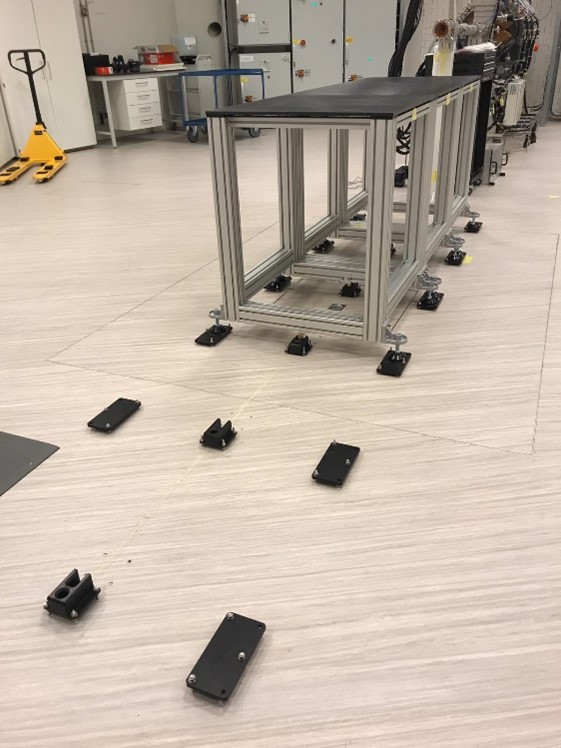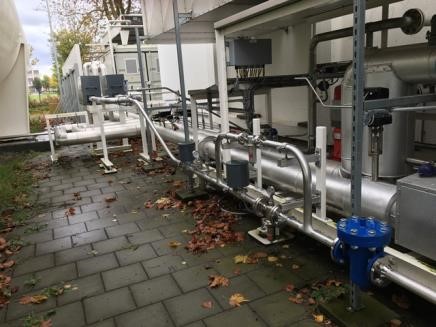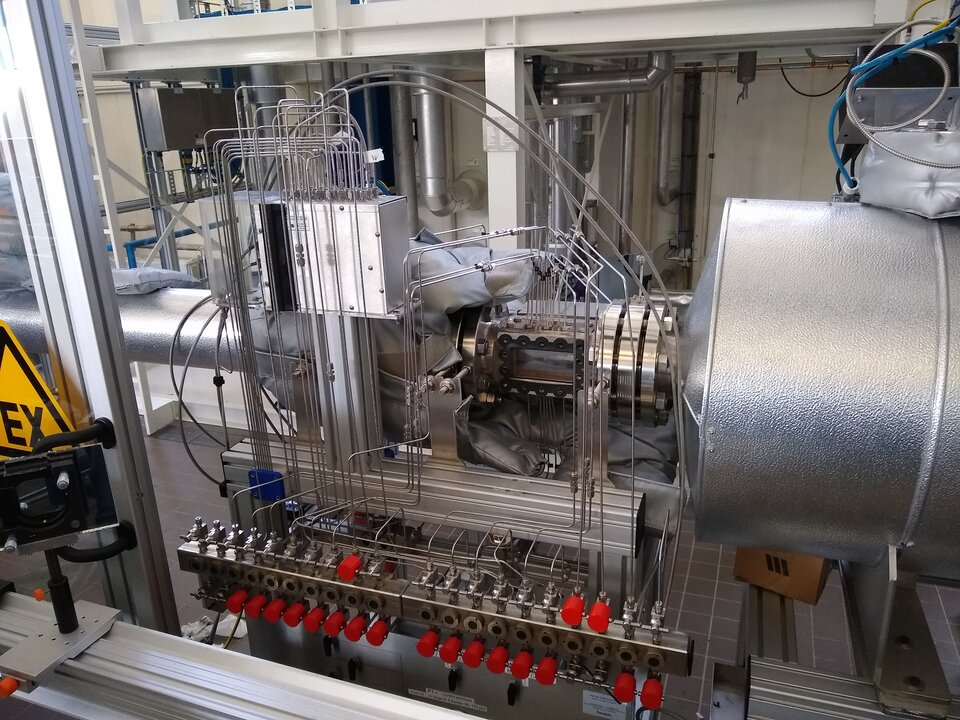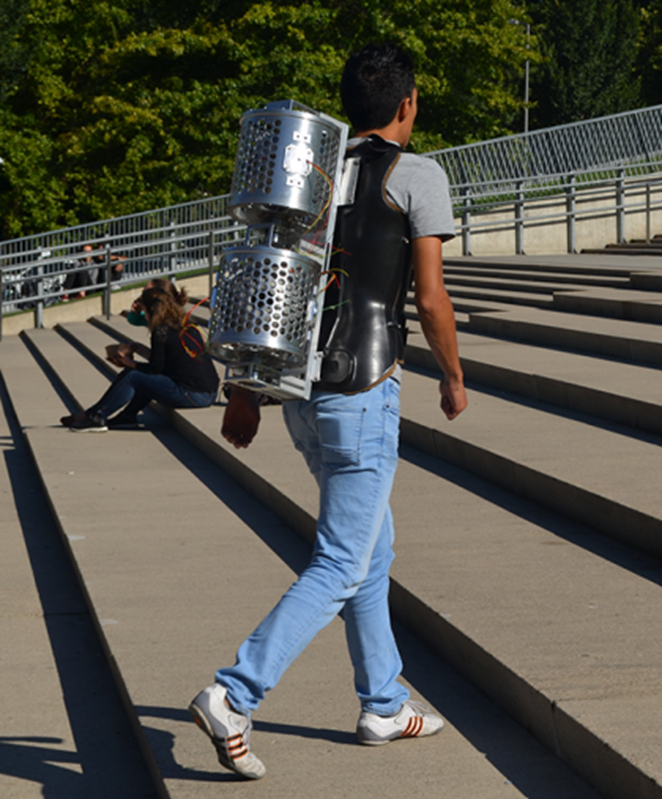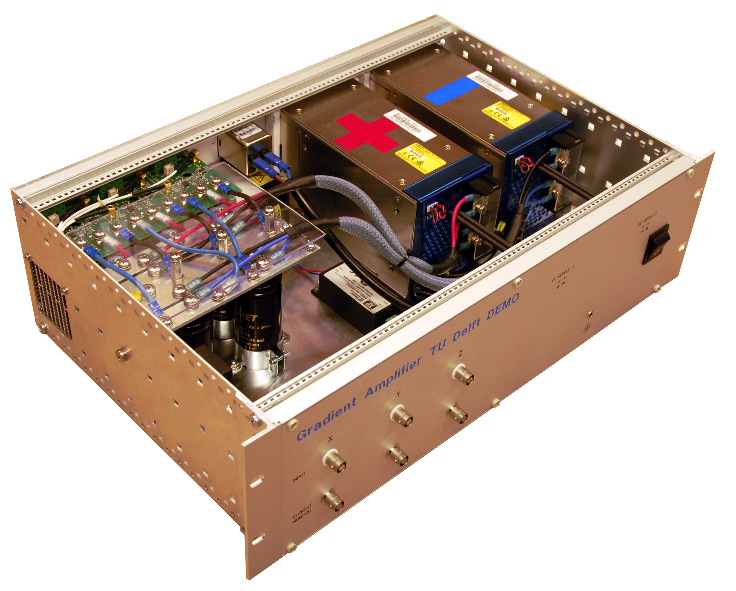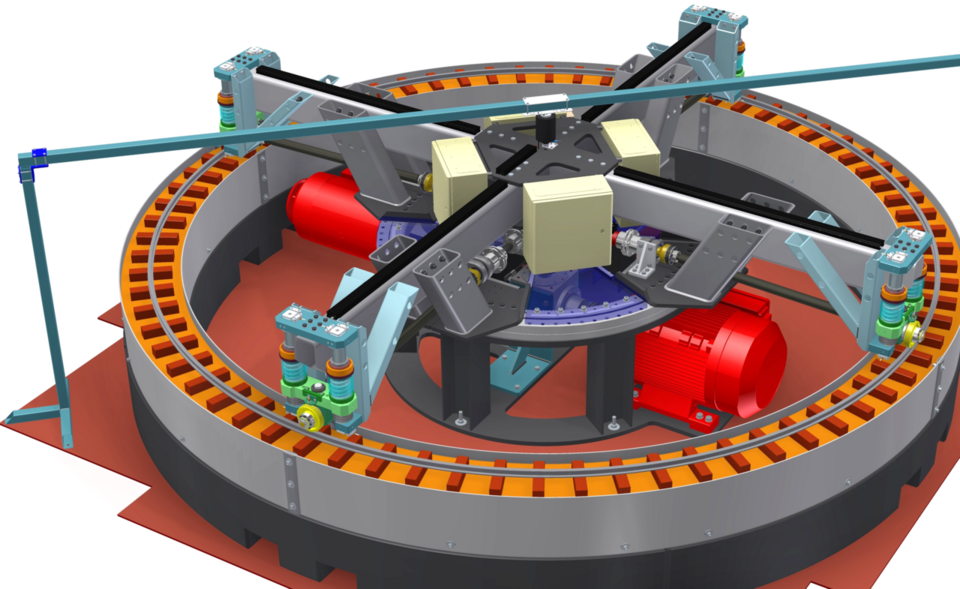HollandPTC has been located behind the RID at the campus since 2018. HollandPTC is one of three proton therapy centres in the Netherlands. Proton therapy is a relatively new form of radiotherapy in the treatment of cancer, in which the tumour can be irradiated precisely with a proton beam. The major advantage of this treatment is that it can be determined relatively accurately where the energy of the protons is released in the body. In purely medical terms, it means that less surrounding tissue is damaged, thus reducing the risk of complications and side effects of radiation. This is particularly useful in areas such as the prostate gland, the eyes, brain and neck area.
The protons are generated in a cyclotron, actually using the same principle as for CERN, and then ‘clouds’ of protons are radiated towards the patient through the gantry that can move 360° around the body.
HollandPTC has three treatment pathways, two regular gantries and an eye treatment pathway, which is the only one in the Netherlands. Aside from these three medical beams, there is a beam for R&D work. Here, research will be conducted into new irradiation techniques and determining their effectiveness. But also more basic research on how DNA recovers when it has been damaged, and totally different fields like the irradiation of components for use in space.
DEMO is involved in the layout of the research bunker. We have delivered a modular table system that is aligned within 0.1 mm in all directions in respect of the proton beam. The experiments can be built on these tables. As the tables have kinetic supports, the tables can mutually be exchanged or driven out of the bunker to build up the experiment elsewhere and then putting it pre-aligned for the beam. We have also been involved in making cabling between the controller chamber and the bunker itself, and the layout of the biological laboratory.
The first instrument, a double ring set-up, basically allows the beam with a diameter of a few mm to be increased to a maximum of 240x240 mm. This makes it possible not only to irradiate very large samples in one go, but also mice, for example.
The double ring consists of a couple of components, in which the beam is converged or collimated each time. The beam first goes through a lead foil. Then the intensity is examined with a detector that is in the beam. This is followed by the actual double ring which is made up of a lead core with an aluminium shell. Then another filter can be placed to change the wavelength of the protons to be collimated just before the detector.
The crux of the set-up is in the lead ring with aluminium shell. It must be very accurately aligned in five axes to obtain a nice homogeneous beam. The difficulty here is that the beam is invisible.
Initially, we had made a very simple, non-adjustable holder for the double ring, but this did not work adequately. It soon became clear that you actually want to be able to move all the axes independently of each other, in order to make minor adjustments. With that in mind, we created a kind of gyroscope which is motor powered, so you do not have to enter the bunker for every adjustment. That is a rather time-consuming process, taking into account the safety requirements regarding radiation. The ring actually becomes radioactive during irradiation. The ring is now well aligned and we are working with collimators. At first, loose plates are taped together to see what and how much is needed, and it is then executed neatly.
The ultimate goal is a fixed set-up that can be taken from the cupboard and placed on the table, so that it is immediately in the exact position. With that in mind, the next step is to measure the position of the double ring with the measuring arm very precisely, and then to make a final fixed set-up in the proper orientation.
When all that has been done, there must be another version with different sizes for lead and aluminium, a trolley to be able to transport the mice, to keep them asleep and to align them with the beam. Also, all kinds of stages and flippers to put various samples in the beam, moving eye phantoms, radiation shielding arrangements, various 3D collimators, moving phantoms to mimic breathing, ….


